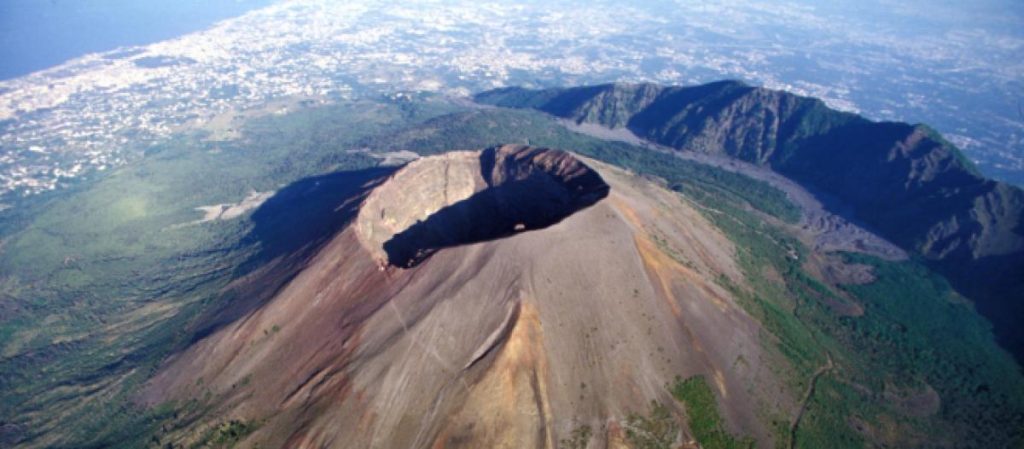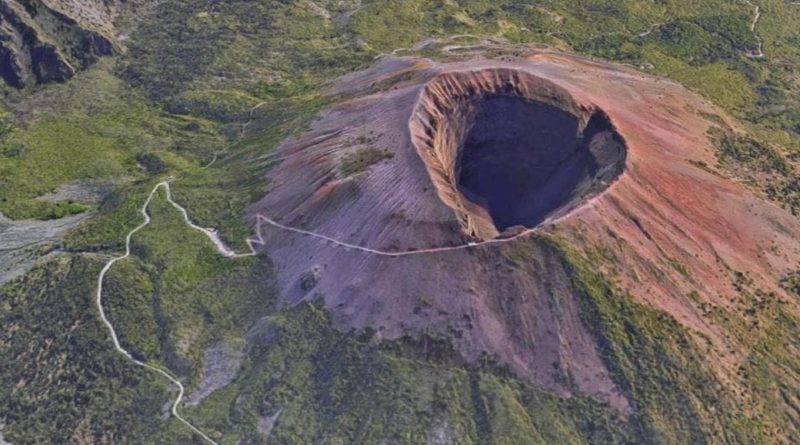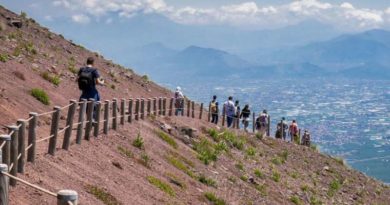The volcano
Mt. Vesuvius is the best known volcano on earth; it dominates the Bay of Naples with its characteristic cone. It is a typical example of a volcano in a volcano made by an outer broken cone, Mt. Somma (1133 metres) with a crateric belt most of which is destroyed. In it there is a smaller cone, the Mt. Vesuvius (1281 metres), divided by lowering named Valle del Gigante (Giants Valley), a part of the ancient caldron where in a later period, perhaps during the 79 A.D. eruption, the Gran Cono (Great Cone) or Mt. Vesuvius arose. The Valle del Gigante is still divided in Atrio del Cavallo on the west and the Valle dell’Inferno on the east. The Somma’s ancient crater is well preserved as far as its entire northern part is concerned, in fact in historic times it was less exposed to the volcano’s devastating violence, because it was well protected by the height of the internal face that has prevented the downflow of lava on its slopes. The slopes, which vary in their steepness, are furrowed by profound radial grooves produced by the erosion of the meteoric waters. The whole section is then characterized by dikes and fringes of dark volcanic rock. The old crater edge is a stream of summits called cognoli. While the height of mount Somma and its profile have remained the same for centuries, the height and the profile of the mount Vesuvius have suffered considerable variation, because of the following eruptions, with raisings and lowerings.

Mt. Vesuvius is a characteristic polygenic mixed volcano, meaning that it is constituted by lava of different chemical composition (for example trachytes, tephrites, leucitites) and formed either by casting of lava or pyroclastic deposits. All the zones at the slopes of the mountain are formed by transported earth of lava mud which goes down from the steep slopes in the rainy seasons through deep and narrow grooves called channels or more commonly “lagni”. The high embankments are formed by piles of lavic scoriae, which precipitated in incandescent state and spread towards the low slopes, proving precious for the vegetation thanks to their fertile material, rich in silicon and potassium. Proceeding along the rim of the crater, one can observe the whole extent of the southern part of the volcano and, during days with good visibility, it is possible to see the entire gulf of Naples, from the Sorrento peninsula to Cape Miseno, Procida and Ischia. It is also possible to note the large number of buildings which have been built on the vulnerable flanks of the mountain. From the 2005, 29 October, Mt. Vesuvius is a museum under the open sky because its roads house 10 colossal sculptures. The permanent exhibition is Creator Vesevo.


